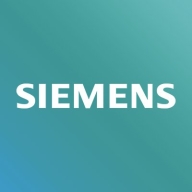

IBM Engineering Lifecycle Management and Polarion ALM are competing products in the application lifecycle management category. IBM ELM seems to have the upper hand in customer support and integration, while Polarion ALM is more favorable due to its modular architecture and scalability, often seen as more cost-effective in the long term.
Features: IBM ELM is known for robust reporting, traceability across various tools, and seamless integration with other IBM products like DOORS for detailed requirements mapping. Its automation capabilities facilitate efficient data management and decision-making. Polarion ALM stands out for its customizable workflows, robust version control, and comprehensive requirement tracking. Its powerful document control and traceability features allow teams to handle all aspects of requirements engineering effectively.
Room for Improvement: IBM ELM could improve its deployment flexibility to better support cloud-based implementations and streamline its cost structure to appeal more to small and medium-sized businesses. The user interface could also be simplified for easier navigation. Polarion ALM may benefit from enhancements in out-of-the-box functionality for planning and management. Users have suggested simplifying the setup process and refining report generation for better user efficiency.
Ease of Deployment and Customer Service: IBM ELM provides a traditional deployment process tailored for enterprises needing extensive support. Its thorough enterprise-grade customer service suits larger organizations with complex infrastructures. Polarion ALM offers modern cloud-based deployment, enabling faster implementation and facilitating agile transitions. Its efficient customer service is particularly beneficial for smaller, agile teams.
Pricing and ROI: IBM ELM's initial setup can be substantial but offers a good ROI with its comprehensive functionality and support. It is ideal for enterprises requiring thorough lifecycle management. Polarion ALM provides a cost-efficient pricing model with competitive ROI due to its lower upfront investment and scalability. This makes it an attractive choice for businesses seeking quick adaptation without heavy initial costs.
| Product | Market Share (%) |
|---|---|
| Polarion ALM | 7.5% |
| IBM Engineering Lifecycle Management (ELM) | 3.9% |
| Other | 88.6% |


| Company Size | Count |
|---|---|
| Small Business | 5 |
| Midsize Enterprise | 4 |
| Large Enterprise | 12 |
| Company Size | Count |
|---|---|
| Small Business | 9 |
| Midsize Enterprise | 3 |
| Large Enterprise | 12 |
IBM Engineering Lifecycle Management stands out for its robust Agile Scrum planning, lifecycle traceability, and tool management, offering cloud-based configurability and strong collaboration features.
IBM Engineering Lifecycle Management provides rich capabilities for Agile project management, facilitating requirements and test management, configuration management, and version control. Its integration with IBM Doors supports comprehensive requirements handling, and the cloud-based platform enhances collaborative efficiency across teams. Despite needing advances in user-friendliness and reporting, ELM's global configuration and compliance features make it invaluable in demanding environments.
What are the key features of IBM Engineering Lifecycle Management?IBM Engineering Lifecycle Management is vital in sectors like automotive and manufacturing, where it implements Agile frameworks to manage requirements, conduct testing, and handle defects. It integrates into development pipelines ensuring live traceability and visibility, supporting critical engineering processes efficiently.
The world’s first 100% browser-based ALM enterprise solution, which enables seamless collaboration across disparate teams, multi-directionally linked work items, full traceability, accelerated productivity and automated proof of compliance.
We monitor all Application Lifecycle Management (ALM) Suites reviews to prevent fraudulent reviews and keep review quality high. We do not post reviews by company employees or direct competitors. We validate each review for authenticity via cross-reference with LinkedIn, and personal follow-up with the reviewer when necessary.